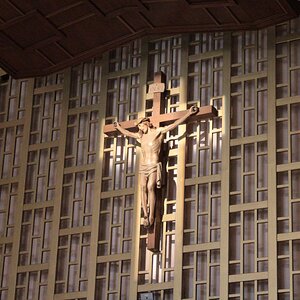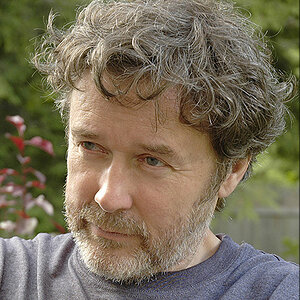Navigation
Install the app
How to install the app on iOS
Follow along with the video below to see how to install our site as a web app on your home screen.

Note: This feature currently requires accessing the site using the built-in Safari browser.
More options
You are using an out of date browser. It may not display this or other websites correctly.
You should upgrade or use an alternative browser.
You should upgrade or use an alternative browser.
Anyone knows what this device is?
- Thread starter Mecko
- Start date
ronlane
What's next?
- Joined
- Aug 3, 2012
- Messages
- 10,224
- Reaction score
- 4,961
- Location
- Mustang Oklahoma
- Website
- www.lane-images.com
- Can others edit my Photos
- Photos OK to edit
Looks like a light meter to me.
cgipson1
TPF Noob!
- Joined
- Aug 18, 2011
- Messages
- 17,142
- Reaction score
- 4,350
- Can others edit my Photos
- Photos NOT OK to edit
Light meter! Notice the similarities with this > Amazon.com: Sekonic L-308s Light Meter - Black: Camera & Photo
View attachment 57076
View attachment 57076
Last edited by a moderator:
As an Amazon Associate we earn from qualifying purchases.
amolitor
TPF Noob!
- Joined
- May 18, 2012
- Messages
- 6,320
- Reaction score
- 2,131
- Location
- Virginia
- Can others edit my Photos
- Photos OK to edit
To be precise, it is an incident light meter. He is measuring the light actually falling on the subject (hence the shielding hand behind it, to minimize leakage from the spots behind). This is opposed to a reflected light meter, which measures how much light is bouncing off the subject (and, presumably, into the lens of your camera). They need to be used somewhat differently.
christop
TPF Noob!
- Joined
- Jun 19, 2012
- Messages
- 211
- Reaction score
- 23
- Location
- Arizona, USA
- Can others edit my Photos
- Photos OK to edit
To be precise, it is an incident light meter. He is measuring the light actually falling on the subject (hence the shielding hand behind it, to minimize leakage from the spots behind). This is opposed to a reflected light meter, which measures how much light is bouncing off the subject (and, presumably, into the lens of your camera). They need to be used somewhat differently.
Correct me if I'm wrong (as I have no direct experience with incident light meters), but shouldn't he be facing the light meter toward the camera so that it "sees" the same light that falls on the subject? And those spots of light are still part of the incident light, so it makes no sense to hide that light from the meter.
He appears to be measuring the light being reflected off the subject (the little white spot on the meter is the integrating sphere, right?). Is he trying to use it as a reflected light meter?
Josh66
Been spending a lot of time on here!
- Joined
- Oct 31, 2007
- Messages
- 14,593
- Reaction score
- 1,239
- Location
- Cedar Hill, Texas
- Can others edit my Photos
- Photos NOT OK to edit
I will often meter different areas, to see how much light will fall behind the subject, etc... Maybe that's what he's doing? Ensuring that the subject will be lit properly, and that the background will also be lit the way he wants it to be.To be precise, it is an incident light meter. He is measuring the light actually falling on the subject (hence the shielding hand behind it, to minimize leakage from the spots behind). This is opposed to a reflected light meter, which measures how much light is bouncing off the subject (and, presumably, into the lens of your camera). They need to be used somewhat differently.
Correct me if I'm wrong (as I have no direct experience with incident light meters), but shouldn't he be facing the light meter toward the camera so that it "sees" the same light that falls on the subject? And those spots of light are still part of the incident light, so it makes no sense to hide that light from the meter.
He appears to be measuring the light being reflected off the subject (the little white spot on the meter is the integrating sphere, right?). Is he trying to use it as a reflected light meter?
Derrel
Mr. Rain Cloud
- Joined
- Jul 23, 2009
- Messages
- 48,225
- Reaction score
- 18,941
- Location
- USA
- Website
- www.pbase.com
- Can others edit my Photos
- Photos OK to edit
I have not seen the whole video, but to me it appears that he is "shielding" the hemisphere from one light--the light that is highlighting the edge of his right hand, and is trying to establish the amount of light falling on the back of her head. He's trying to get a reading of the light that is falling on the back of her head, but as you can see by the hot light on the edge of his hand, there is another light raking in, and he's trying to prevent that "hotter" light's reading from being picked up by the hemisphere on the meter. So, no, he's not using the meter as a reflected light meter...he's doing a pretty normal operating procedure that many people do when using a hemispherical incident dome instead of a flat diffuser screen, which does not tend to pick up off-axis light to such a high degree.
Newtricks
No longer a newbie, moving up!
- Joined
- Aug 15, 2013
- Messages
- 607
- Reaction score
- 104
- Location
- Cali4nia
- Can others edit my Photos
- Photos NOT OK to edit
Correct me if I'm wrong (as I have no direct experience with incident light meters), but shouldn't he be facing the light meter toward the camera so that it "sees" the same light that falls on the subject? And those spots of light are still part of the incident light, so it makes no sense to hide that light from the meter.
He appears to be measuring the light being reflected off the subject (the little white spot on the meter is the integrating sphere, right?). Is he trying to use it as a reflected light meter?
The meter is pointed towards the camera that took the picture, so he is reading the incidental light at the subject, wanting to measure the exposure based on the light falling directly on the subject without light from any other source is why the meter is being shielded from the back light. Where reflect light being metered, the meter would be pointed at the subject from the cameras point of view (a spot meter would be best in this situation), same way the meter in an SLR works.
christop
TPF Noob!
- Joined
- Jun 19, 2012
- Messages
- 211
- Reaction score
- 23
- Location
- Arizona, USA
- Can others edit my Photos
- Photos OK to edit
Correct me if I'm wrong (as I have no direct experience with incident light meters), but shouldn't he be facing the light meter toward the camera so that it "sees" the same light that falls on the subject? And those spots of light are still part of the incident light, so it makes no sense to hide that light from the meter.
He appears to be measuring the light being reflected off the subject (the little white spot on the meter is the integrating sphere, right?). Is he trying to use it as a reflected light meter?
The meter is pointed towards the camera that took the picture, so he is reading the incidental light at the subject, wanting to measure the exposure based on the light falling directly on the subject without light from any other source is why the meter is being shielded from the back light. Where reflect light being metered, the meter would be pointed at the subject from the cameras point of view (a spot meter would be best in this situation), same way the meter in an SLR works.
Ah, I was wrong. For some reason I thought he was holding the meter in front of and toward her, but he's actually holding it behind and away from her. I need to get my eyes checked.
Similar threads
- Replies
- 11
- Views
- 918
- Replies
- 4
- Views
- 382
- Replies
- 5
- Views
- 460

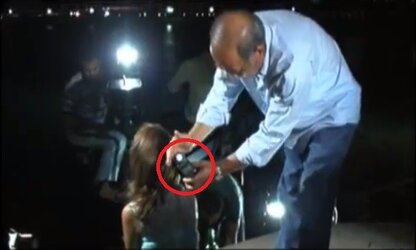
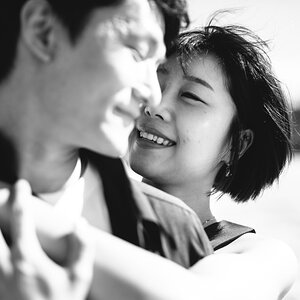
![[No title]](/data/xfmg/thumbnail/30/30875-d76f1fa085aee4334cb6b0cd62bb5e2d.jpg?1619734491)


![[No title]](/data/xfmg/thumbnail/35/35268-34a315519597f60516d59124092e9bc2.jpg?1619736971)
![[No title]](/data/xfmg/thumbnail/35/35266-f58b019dadff6920c09071a847f052c3.jpg?1619736970)


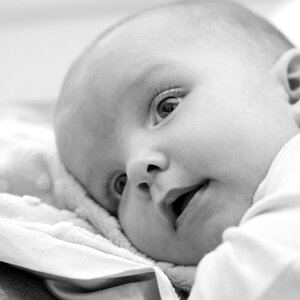
![[No title]](/data/xfmg/thumbnail/30/30873-79f4c5bc298110a994e9eed027728db8.jpg?1619734490)
